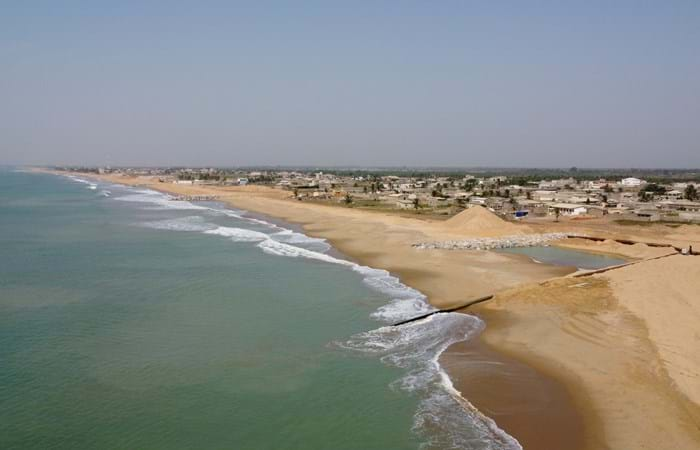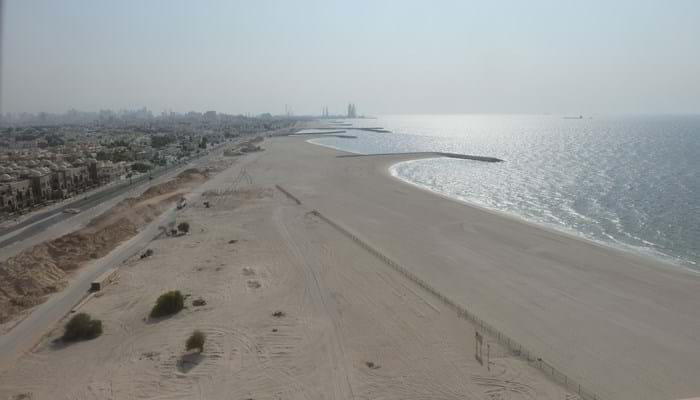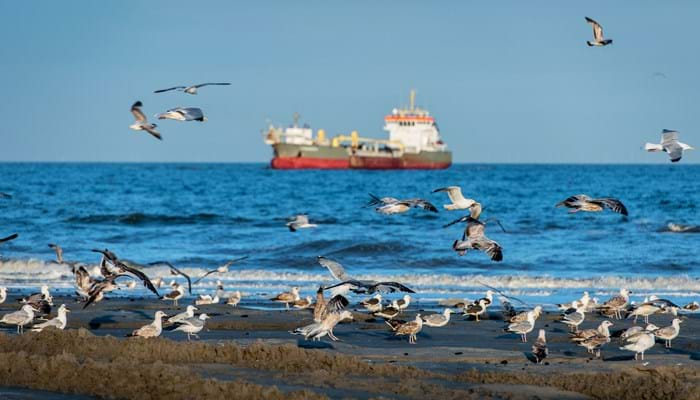Traditional coastal nourishment involves frequent repeat operations that periodically disturb coastal environments. Sand motors – an example of a sandy solution – are a more sustainable option: they use natural coastal dynamics to gradually spread the sand over a long stretch of coast over time. The concept has been scientifically proven, accepted as best practice and widely implemented.
BENEFITS
Coastal protection
Sandy coastlines are the first line of defense against sea level rise. Sandy solutions consisting of large volumes of sand can protect coastlines for decades. The wind and currents gradually redistribute the sand
along the coast, replenishing the beaches and dunes as needed.
Nature development
Depositing large volumes in a single operation reduces the required nourishment frequency, allowing more time for the development of large nature areas. The combination with local coastal dynamics results in diverse habitats with benthic gradients, dune vegetation and lagoon formation that attract macrobenthos, fish and birdlife.
Economy
These nourishments also generate opportunities for tourism, leisure and sports. The ecosystem-based approach means they are the focus of coastal research and innovative coastal management solutions.
Local economies can also benefit directly from the creation of a freshwater reservoir.
OUR APPROACH
Building with nature is at the heart of every sandy solution. Environmental awareness and a detailed system understanding of biotic and abiotic factors are crucial for succesfull development.
The design (shape, volume, frequency) typically depends on local conditions, the requirements
and the local availability of sand of the right quality. Sand is increasingly becoming a scarcer and therefore valuable resource, so our approach focuses on its efficient use and smart interventions in the natural system for maximum effect with the least possible materials used.
OUR EXPERIENCE
Sandy solutions have been used successfully in multiple locations on coastlines and lakes. In holistic designs co-developed by Boskalis, flood risk management, nature quality and leisure facilities have all benefited from
improvements in the quality of shallow foreshores. The Sand Motor on the Dutch coast is a prime example. A ten-year program of intensive monitoring has shown that new dunes have formed, existing dunes have grown larger, and that new habitats have been created, boosting biodiversity in the sea, on land, and in the air.
We successfully strengthened a stretch of the Romanian coast, where a special focus was placed on marine ecosystem revival and development. As part of the West African Coastal Areas Management (WACA) program,
we also restored the eroded Togo and Benin coastline with innovative nature-based sandy solutions.
COLLABORATION
Sandy solutions involve large-scale operations where collaboration is crucial. The successful implementation depends on stakeholder engagement: most parties involved are now firm supporters of these nature-based solutions.
We have strategic partnerships with professionals all over the world, including knowledge institutes, engineering consultants, a number of universities and NGOs. We are also a leading partner of the EcoShape
consortium, executing the Building with Nature program. With our partners, we create opportunities in research, pilot studies, tenders and projects. We share our insights, scientific knowledge, and technical
expertise as input for project developments with our clients.
WHAT CAN WE OFFER?
We can design and realize unique fit-for-purpose sandy solutions with our clients. These can be one-off projects but they can also be combined with projects such as the beneficial use of dredged sediments.
Work with us to protect the world’s coastlines and mitigate the causes and effects of coastal erosion.



